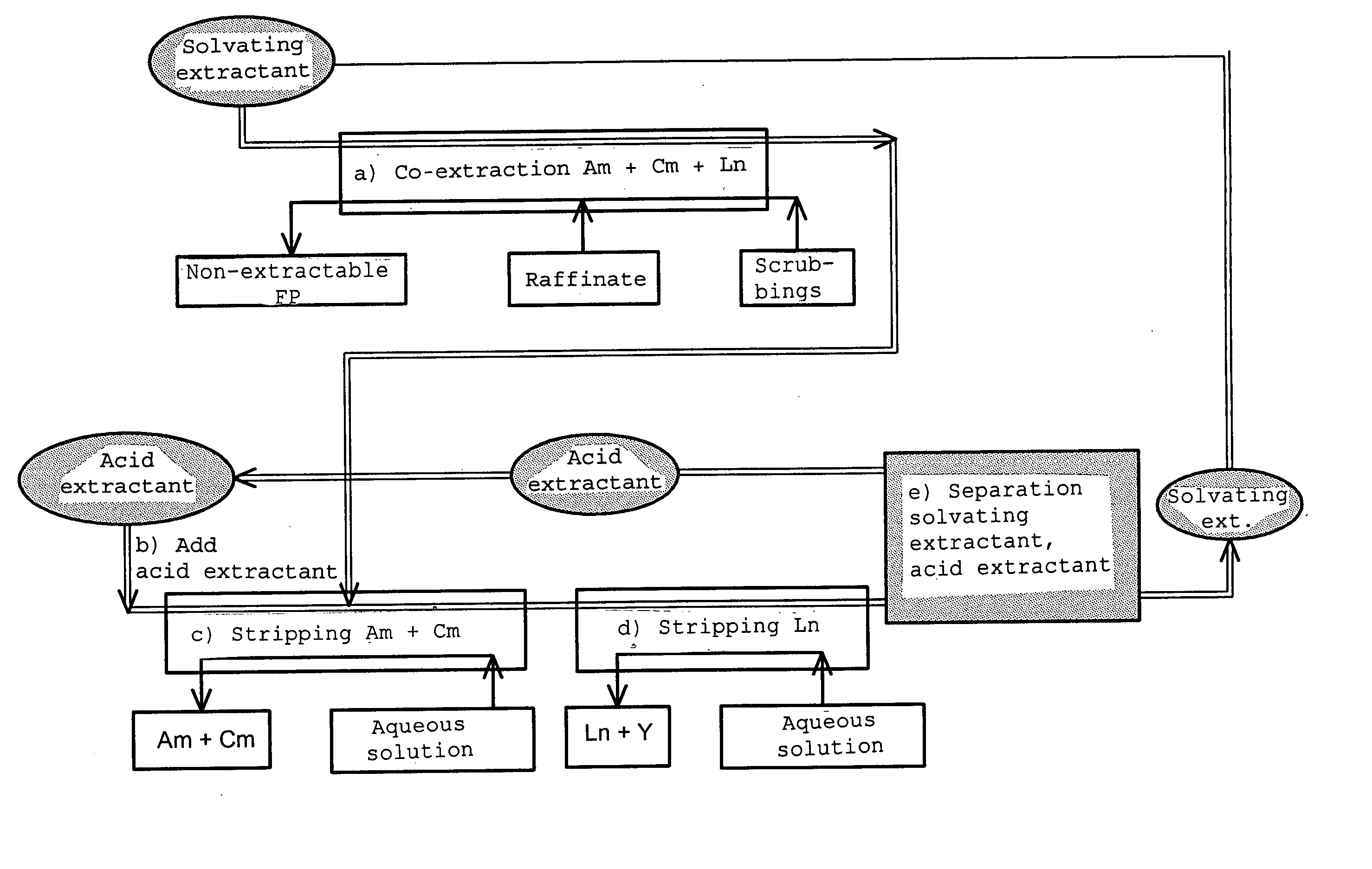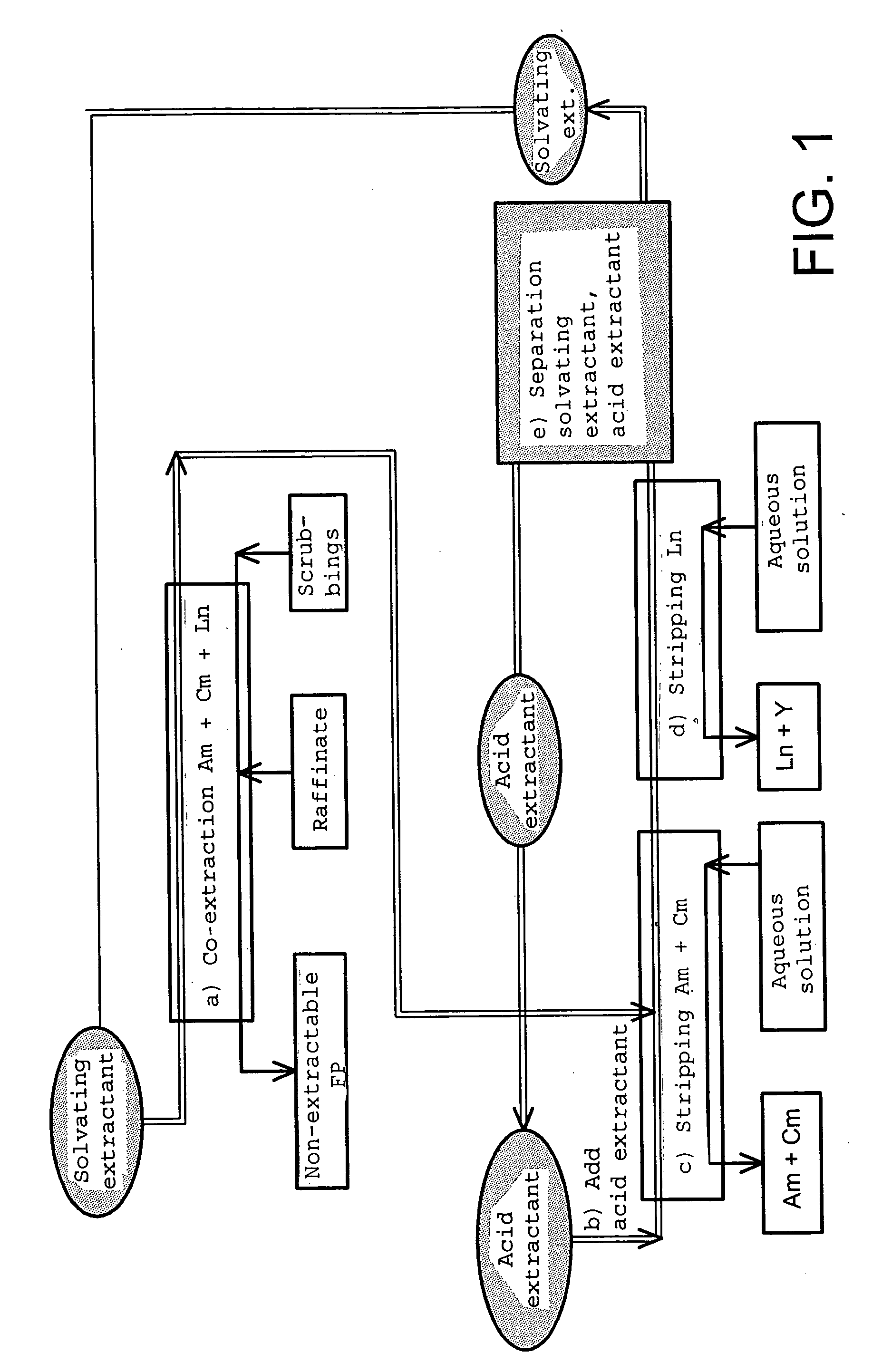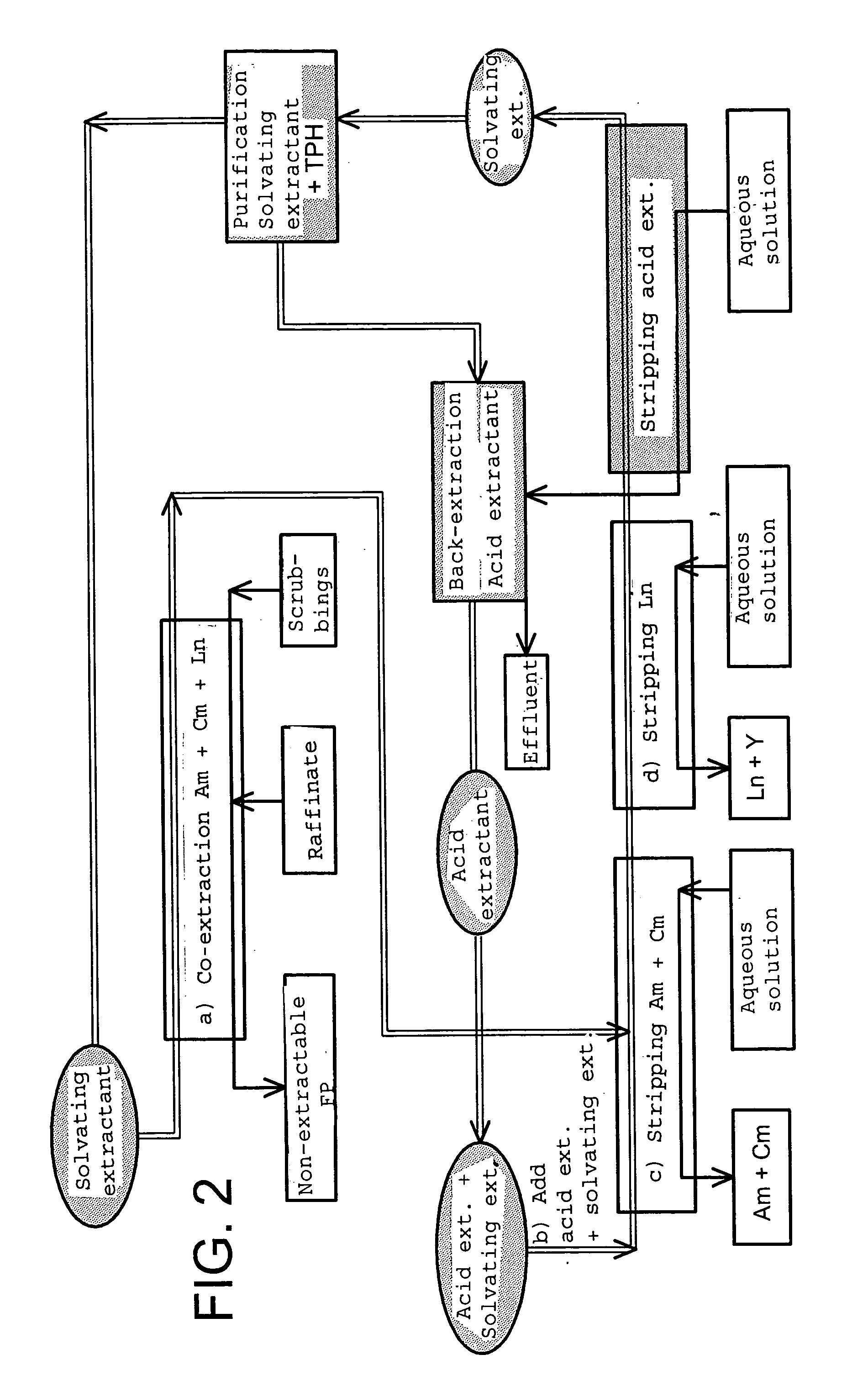Cyclic method for separating chemcial elements present in an aqueous solution
a cyclic method and aqueous solution technology, applied in the field of cyclic method for separating chemcial elements present in aqueous solution, can solve the problem of reducing the extracting power of the solvating extractant vis-à-vis the actinides
- Summary
- Abstract
- Description
- Claims
- Application Information
AI Technical Summary
Benefits of technology
Problems solved by technology
Method used
Image
Examples
example 1
Elimination of the Parasitic Co-Extraction of Undesirable Elements
[0093] The suitability of the method according to the invention in eliminating the phenomena of parasitic co-extraction of undesirable chemical elements while separating minor actinides and lanthanides was highlighted by tests aimed at treating two aqueous solutions, referred to hereafter as S1 and S2 and containing molybdenum, zirconium and 3 to 4 mol / l of nitric acid (which corresponds to the nitric acidity of a PUREX raffinate), with:
[0094] firstly, an organic phase, hereafter called P1, which comprises 0.65 M DMDOHEMA and 0.6 M of HBDMBP in HTP, and
[0095] secondly, an organic phase, hereafter called P2, which only contains 0.65 M DMDOHEMA in HTP.
[0096] The initial compositions of the solutions S1 and S2 are shown in Table 1 below.
1 TABLE 1 Solutions S1 S2 HNO.sub.3 (mol / l) 3.35 3.85 Oxalic acid (mol / l) 0.1 0.1 Mo (mg / l) 192 191 Zr (mg / l) 197 196
[0097] The solutions S1 and S2 and the organic phases P1 and P2 brough...
example 2
Extracting Power of the Solvating Extractant
[0115] In the context of separating minor actinides from lanthanides, the reduction in the solvating power of the solvating extractant when said extractant is used in a mixture with the acid extractant, was highlighted by tests that aimed to treat an aqueous solution, hereafter called S3, containing traces of nitrates of americium (.sup.241Am: 707 MEq / l) and europium (.sup.152Eu: 188 MBq / l) as well as 4 mol / l of nitric acid, with:
[0116] firstly, an organic phase P1 of identical composition to the organic phase P1 used in example 1, and
[0117] secondly, an organic phase P2 of identical composition to the organic phase P2 used in example 1.
[0118] To do this, the solution S3 was brought into contact with the organic phases P1 and P2 in parallel, volume by volume, for 10 minutes at a constant temperature of 20.degree. C.
[0119] After decanting and separating the phases, the activities of americium and europium were determined by gamma spectromet...
example 3
Validation of the Feasibility of the Method According to the Invention on a Pilot Scale
[0130] The feasibility, on a pilot scale, of a method according to the invention comprising a step e) as represented in FIG. 2, in other words comprising the stripping of the acid extractant from the organic phase, then its back-extraction in a fraction of said phase after purification of said phase, was validated by experiments, carried out in the laboratory, by means of miniature centrifuge extractors that make it possible to simulate the implementation of a method on a practical scale.
[0131] These experiments were carried out by:
[0132] stripping HBDMBP from a first organic phase, hereafter called P4, and initially comprising a mixture of 0.63 M DMDOHEMA and 0.32 M HBDMBP in solution in HTP, and by
[0133] back-extracting the HBDMBP in a second organic phase, hereafter called P5, and initially comprising 0.68 M DMDOHEMA in solution in HTP.
[0134] The stripping of HBDMBP from the organic phase P4 we...
PUM
| Property | Measurement | Unit |
|---|---|---|
| pH | aaaaa | aaaaa |
| temperature | aaaaa | aaaaa |
| temperature | aaaaa | aaaaa |
Abstract
Description
Claims
Application Information
 Login to View More
Login to View More - R&D
- Intellectual Property
- Life Sciences
- Materials
- Tech Scout
- Unparalleled Data Quality
- Higher Quality Content
- 60% Fewer Hallucinations
Browse by: Latest US Patents, China's latest patents, Technical Efficacy Thesaurus, Application Domain, Technology Topic, Popular Technical Reports.
© 2025 PatSnap. All rights reserved.Legal|Privacy policy|Modern Slavery Act Transparency Statement|Sitemap|About US| Contact US: help@patsnap.com



